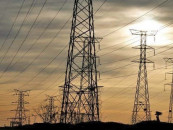Pitfalls of consumption-led growth
This recipe for growth may not be effective for economies like Pakistan’s

As 2020 fades out, the pandemic-hit global economy continues to be in a tailspin. The outgoing year will go down as one of the worst in terms of economic growth over the past half a century.
All the major economies, with the exception of China, will close the year with negative growth. Even in China, the growth rate for 2020 is projected to slip to 1.9% from 6.1% in 2019.
In South Asia as well, the numbers are dismal. India, the region’s largest economy, will register negative growth of 10.3% compared to 4.2% growth in 2019. Pakistan’s economy is likely to contract 0.4% from 1.9% growth a year earlier (IMF projections).
Although forecasts for 2021 are relatively optimistic, the actual economic performance will essentially be contingent upon success in bringing Covid-19 under control.
In the face of deep economic recession, boosting consumption is being prescribed as potentially one of the most effective recipes. This prescription is based on conventional economic wisdom that recession, above all, represents a drastic decline in aggregate demand. Hence, to revive aggregate demand, consumption needs to be stepped up.
Increased consumption will encourage businesses to drive up production, which will lead to job creation and rising income, leading to a further increase in aggregate demand, and so on.
The recipe appears logical but like any other one-size-fits-all solution, its effectiveness varies from country to country.
To explain why the consumption-led growth may not be effective for all economies, let’s turn to elementary economics.
The total product or output created in an economy is either consumed or exported. The more of it is consumed, the less of it is available for export, and vice versa.
Likewise, a country’s consumption rests on either domestically produced goods and services or foreign ones. If a country produces more than it consumes, it is a net exporter or runs a trade surplus; in case it produces less than it consumes, it is a net importer or runs a trade deficit.
When an economy embarks on consumption-led growth, its consumption will increase. But would the increased consumption set in motion the virtuous cycle of enhanced production, job creation and income generation, leading to even higher consumption?
The answer to this question depends on whether the economy has sufficient idle production capacity, which has not been utilised because of a lack of sufficient demand and which can be put to use in response to the increase in consumption.
In other words, is the economic downturn cyclic? If the answer is in the affirmative, the consumption-led growth will prove effective. But if the answer is in the negative, and the downswing is structural, the increased consumption will mostly shore up import demand.
As due to supply-side constraints exports are not likely to keep pace with import expansion, the economy will run an even higher trade deficit. The galloping trade deficit will largely be financed by external borrowing, which will inflate public debt.
A low-income economy may become a dumping ground for cheap imported consumer products, with little productivity gains. Pakistan is one such economy, where the consumption-led growth has done far more damage than good.
Similar policies pursued
In recent years, the consumption-led growth was pursued during two periods, viz, FY 2004-08 and FY 2014-18. During these periods, different political parties were at the helm.
Those parties might represent the opposing sides of the political divide but they adopted similar policy instruments in pursuit of consumption-led growth, with remarkably similar results.
One, on both occasions expansionary monetary policy was pursued to keep interest rates low. The avowed purpose was to curtail the cost of doing business and encourage investment.
However, the monetary expansion ended up encouraging consumer borrowing and speculative investment — in real estate and stock market — at the cost of productive or real sector investment.
In case of speculative investment, wealth is not created, it only changes hands. Movement of stocks or sale and purchase of land may multiply the wealth of some people and make others pauper, but there are no net gains to the economy.
In case of Pakistan, on both the above-mentioned occasions, the stock and property markets were the star performers, thus creating a growth bubble, which not surprisingly burst after it had run its course.
Two, in the presence of a fragile domestic production capacity, the increased consumption was met largely through imports, thus fueling trade and current account deficits.
At the end of FY08, the current account deficit shot up to $14.1 billion (8.2% of gross domestic product - GDP) from $6.87 billion (4.8% of GDP) a year earlier, and trade deficit increased to $20.91 billion (12.3% of GDP) from $13.56 billion (8.9% of GDP).
Likewise, FY18 ended up with a whopping $19.89 billion current account deficit (6.1% of GDP) undergirded by a trade deficit of $37.58 billion (9.8% of GDP).
Three, although for the most part in each period, the national currency exhibited relative stability, the exchange rate in fact was overvalued, which allowed cheaper imports but discouraged exports.
A country running a persistent and increasing trade deficit normally sees its currency go down as the demand for foreign currency well exceeds its supply. So, if in the face of it, the currency remains stable despite a persistent external deficit, it may be concluded that the exchange rate is overvalued.
On both occasions, in the last year of the government when it was no longer possible to keep an overvalued exchange rate, it was left to market forces. As a result, the value of currency nosedived on each occasion in keeping with its equilibrium value (where demand and supply match) in the foreign exchange market.
Four, during both periods economic growth accelerated. The FY 2004-08 period saw average economic growth of 7%, while during FY 2014-18, the economy grew on average 4.8%.
But on each occasion, the relatively high growth rate could not be sustained and soon the economy fell into recession. FY09 saw growth rate slip to 0.4% from 5.8% in FY08. Likewise, FY19 saw growth recede to 1.9% from 5.6% in FY18.
Finally, on both occasions, the external balance position had become so fragile that the country had to go back to the IMF for multibillion-dollar assistance.
Structural problems
Like several other developing economies and unlike most developed countries, Pakistan’s economic problems are essentially not cyclic or arise out of the deficiency of aggregate demand but are structural – a low industrial base, low productivity of labour and land, and capital scarcity.
The economy has faced premature deindustrialisation, thus reducing the share of manufacturing in GDP to only 13.2% in FY19 and further to 12.5% in FY20 compared with 15% on average during the 1990s.
Agriculture, the backbone of the economy, is characterised by low productivity, making country a net food importer to the tune of $1.5 billion per annum.
Labour, the economy’s most abundant factor of production, is largely unskilled and thus deficient in productivity. Hence, the labour market is characterised by low wage competition — a race to the bottom.
In such a scenario, the consumption-driven growth will make matters worse. The economy will be like a household which has no steady income stream but goes on a spending spree by borrowing or running down its assets.
The right growth strategy for Pakistan is the one that addresses the above-mentioned — and other — supply-side constraints. Building reliable industrial value chains and shoring up the productivity of land and labour should be the focus of growth strategy.
The writer is an Islamabad-based columnist
Published in The Express Tribune, December 28th, 2020.
Like Business on Facebook, follow @TribuneBiz on Twitter to stay informed and join in the conversation.



















COMMENTS
Comments are moderated and generally will be posted if they are on-topic and not abusive.
For more information, please see our Comments FAQ